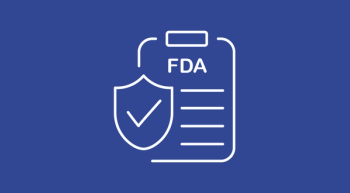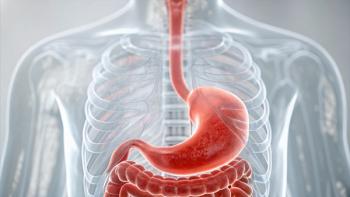
Patients with Unresectable Hepatocellular Carcinoma with Moderately Impaired Liver Function May Continue Lenvatinib Therapy
Researchers observed a similar tumor size reduction between 2 arms of patients with hepatocellular carcinoma who were stratified by their liver function class and treated with lenvatinib.
A post-hoc analysis of the phase 3 REFLECT trial (NCT01781266) indicated that patients with unresectable hepatocellular carcinoma (uHCC) with Child-Pugh class B (CP-B) liver function fared similarly to their Child-Pugh class A (CP-A) counterparts who received lenvatinib (Lenvima). The tumor size reduction was similar between the 2 groups, according to an analysis presentated at the 2021 European Society for Medical Oncology World Congress on Gastrointestinal Cancer.
“The results of this post hoc analysis suggest that patients with uHCC whose liver function deteriorates to CP-B after initiation of therapy may continue to receive lenvatinib,” the researchers wrote.
Results from the randomized, multicenter phase 3 REFLECT study– which led to the FDA’s approval of the agent for the first-line treatment of patients with uHCC – showed a benefit from lenvatinib, compared with sorafenib (Nexavar), irrespective of baseline liver function, including albumin-bilirubin (ALBI) grade 1 or 2 and CP score of 5 or 6.
However, of note, the trial enrolled patients with CP-A liver function per the study inclusion criteria, but not CP-B specifically.
“In the absence of any initial enrollment of patients with CP-B liver function, we conducted a post hoc exploratory analysis of key efficacy and safety outcomes in patients from REFLECT whose liver function had deteriorated to CP-B versus those whose liver function remained CP-A within 8 weeks post-randomization.”
The post hoc analysis assessed overall response rate (ORR), and landmark analyses that began after week 8, including progression-free (PFS) and overall survival (OS), both in patients whose liver function had deteriorated to CP-B and in patients whose liver function remained CP-A within 8 weeks post-randomization. In addition, safety was evaluated from baseline and adjusted by treatment duration.
Among patients treated with lenvatinib in the CP-B (n = 60) and CP-A (n = 413) subgroups, the median percent changes in tumor size from baseline to week 8 were –16.2% (range, –100 to 25) and –15.9% (range, –100 to 187), respectively, compared with 1.7% (range, –36 to 64) and 0% (range, –100 to 106) in patients treated with sorafenib in the CP-B (n = 47) and CP-A (n = 427) subgroups.
In the lenvatinib group, the CP-B and CP-A subgroups demonstrated ORRs of 28.3% (95% CI, 16.9-39.7) and 42.9% (95% CI, 38.1-47.6), respectively. In particular, for the CP-B subgroup of the lenvatinib arm, there were 0 complete responses (CRs), 17 (28.3%) partial responses (PRs), 17 (28.3%) patients with stable disease (SD), 12 (20.0%) with progressive disease (PD), and 14 (23.3%) were not evaluable (NE), compared with 10 (2.4%) CRs, 167 (40.4%) PRs, 142 (34.4%) with SD, 67 (16.2%) with SD, and 27 (6.5%) NE for the CP-A subgroup.
In the sorafenib group, the CP-B and CP-A subgroups demonstrated ORRs of 8.5% (95% CI, 0.5-16.5) and 12.9% (95% CI, 9.7-16.1), respectively. In particular, for the CP-B subgroup of the sorafenib arm, there were 0 CRs, 4 (8.5%) PRs, 12 (25.5%) with SD, 23 (48.9%) with PD, and 8 (17.0%) NE, compared with 4 (0.9%) CRs, 51 (11.9%) PRs, 207 (48.5%) with SD, 129 (30.2%) with PD, and 36 (8.4%) NE.
After week 8, median OS was 6.8 months (95% CI, 2.6-10.3) and median PFS was 3.7 months (95% CI, 1.8-7.4) in lenvatinib-treated patients within the CP-B subgroup, compared with 13.3 months (95% CI, 11.6–16.1) and 6.5 months (95% CI, 5.6–7.4), respectively, in the CP-A subgroup. In the sorafenib-treated CP-B subgroup, median OS and PFS were 4.5 months (95% CI, 2.9–6.1) and 0.5 months (95% CI, 0.1–3.6), respectively, compared with 12.0 months (95% CI, 10.2–14.0) and 3.6 months (95% CI, 0.1–3.6) in the CP-A subgroup.
In the CP-B and CP-A subgroups treated with lenvatinib, the median duration of treatment was 3.2 months (range, 0.3-31.5) and 6.9 months (range, 0.0-35.0), respectively, compared with 1.9 months (range, 1.9 months (range, 0.2-22.4) and 3.7 months (range, 0.1—38.7) in the sorafenib-treated CP-B and CP-A subgroups.
The mean dose intensity of lenvatinib was 8.4 mg/day/patient (standard deviation [SD], 3.07) and 9.5 mg/day/patient (SD, 6.01) in the CP-B and CP-A subgroups, respectively, whereas the mean dose intensity of sorafenib was 653.2 mg/day/patient (SD, 165.75) and 664.8 mg/day/patient (SD, 174.23) in the CP-B and CP-A subgroups, respectively.
Among the CP-B and CP-A patients, rates for grade 3 or higher treatment-related adverse events (TRAEs) in the lenvatinib arm were 3.65% (n = 95) and 1.41% (n = 419), respectively, and 3.38% (n = 42) and 1.71% (n = 388), respectively, in the sorafenib arm.
In their conclusion, the researchers noted, “As this post hoc analysis is limited by its descriptive nature, the efficacy results cannot be compared between CP–B and CP–A subgroups,” adding that further investigation is warranted.
“Although the treatment landscape for patients with unresectable hepatocellular carcinoma (uHCC) has recently expanded, there remains an unmet need for effective treatment options in patients with Child–Pugh class B (CP-B) liver function. Such patients are rarely included in clinical trials,” the researchers wrote in their poster.
In the trial, patients with uHCC were randomly assigned 1:1 to receive lenvatinib – for which dosage was based bodyweight: 12 mg/day for those weighing ≥ 60 kg; 8 mg/day for those weighing < 60 kg) – or sorafenib 400 mg twice daily in 28-day cycles.
At baseline, patients whose liver function deteriorated to CP-B within 8 weeks in the lenvatinib and sorafenib arms, 73.3% and 61.7%, respectively, had an ALBI score of 2, and 60.0% and 44.7% had a CP score of 6. Similarly, among those whose liver function remained CP-A within 8 weeks in both arms, 73.1% and 75.4%, respectively, had an ALBI score of 1, and 83.5% and 78.5% had a CP score of 5.
In the prior analysis, treatment with lenvatinib demonstrated higher ORR, compared with sorafenib, in patients with a CP score of 5 (OR, 4.88; 95% CI, 3.37-7.08) and in those with a CP score of 6 (OR, 5.25; 95% CI, 2.32-11.85), as well as in patients classified as either ALBI grade 1 (OR, 5.48; 95% CI, 3.70-8.10) or ALBI grade 2 (OR, 5.37; 95% CI, 2.61-11.06).
Reference
Huynh J, Thet Cho M, Jae-Hoon Kim E, Ren M, Amaya-Chanaga C, Vogel A. Post hoc analysis in patients with unresectable hepatocellular carcinoma who progressed to Child–Pugh B liver function in the phase 3 REFLECT study of lenvatinib vs sorafenib. AnnOncol. 2021;32(suppl 3) doi:10.1016/j.annonc.2021.05.133
This article was originally published on OncLive as
Newsletter
Knowledge is power. Don’t miss the most recent breakthroughs in cancer care.




















































































